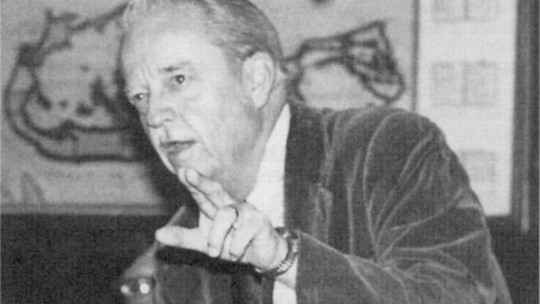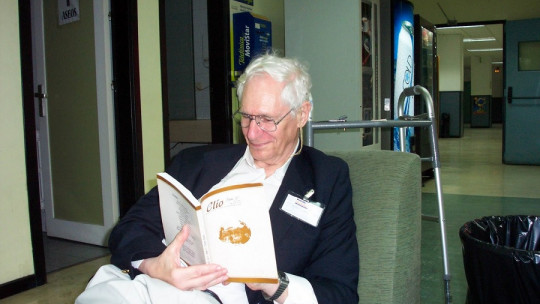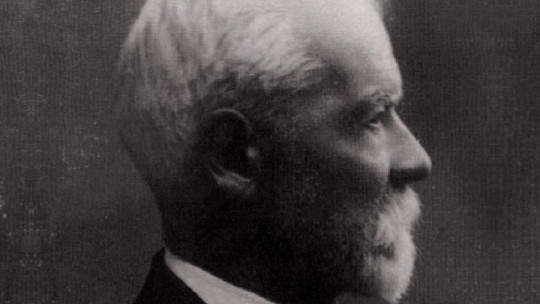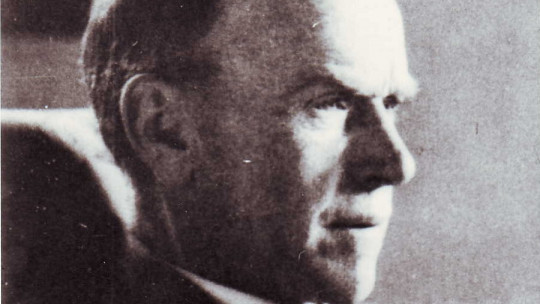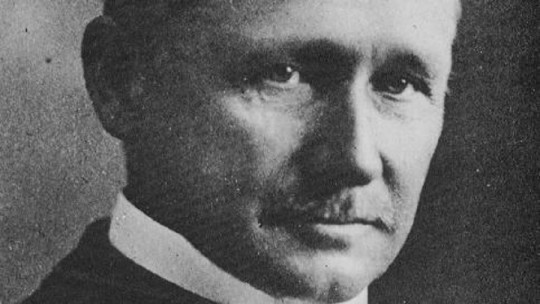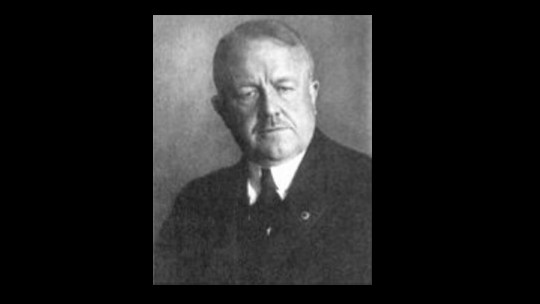
The end of the 19th century and the beginning of the 20th marked the arrival of the second industrial revolution and with it a modernization of industrial processes.
To better understand some of the methodologies that emerged and that gave a boost to the factories, it is necessary to study the life of figures such as Frank Gilbreth. In these paragraphs we will learn about his life and his main contributions to labor sciences and more specifically to industrial engineering, through a biography of Frank Gilbreth
Brief biography of Frank Bunker Gilbreth
Frank Bunker Gilbreth was born in Fairfield, part of the state of Maine in the United States, in 1868. His origins were very humble, as his mother taught at a nearby school and his father combined his work as a rancher with his work in a hardware store. Besides, His father died when Frank Gilbreth was very young, since he was only three years old when this tragic event took place. Following the death of his father, the family decided to move to Andover, in the state of Massachusetts.
His father’s inheritance vanished in a few years and Frank Gilbreth’s mother’s salary as a teacher was not enough to support her family, taking into account the exclusive schools to which she took her children.
Therefore, he made the decision to move again, this time to Boston, in search of quality public schools where children could continue their studies without this entailing the large financial outlay that he had to make in his previous location.
Youth and first innovations
Frank Gilbreth was not an outstanding student in school, although he progressively focused more on studying, He was especially attracted to subjects that had to do with mathematics and science So much so that he even took the tests to enter the prestigious MIT (Massachusetts Institute of Technology), but the financial situation at home made him finally give up and instead start working to relieve the financial pressure his mother was suffering. .
This is how, at the age of 17, he started his first job, as a bricklayer no less, through the mediation of a former teacher. And this point was key in the life of Frank Gilbreth for his future contributions, since working as a worker allowed him to observe the multiple ways in which any task had to be carried out, no matter how simple it was, and he was always interested in finding a way to optimize to the maximum all of them. Thus, Gilbreth progressed and rose, while studying at night.
With that perseverance and effort, Frank Gilbreth, In just 5 years, he was promoted to superintendent, which finally managed to alleviate the economic situation of the home And this is when he began a stage of innovation for the industry, thanks to his awake mind and his own experience. The first patent he launched was for a vertical scaffolding, the purpose of which was to allow the worker to always have the pile of bricks accessible at the level at which he was working, without having to constantly move.
He also improved the structures in which the workers worked, making them waterproof. He was also in charge of perfecting the work with concrete. In his meteoric rise in the industry, he became a member of ASME, the American Society of Mechanical Engineers, and rose to the top he could in the company, becoming chief superintendent. However, Renton Whidden, a former teacher and boss for a decade, did not give him the opportunity to become a partner, so Frank Gilbreth embarked on his own adventure.
Career development: Gilbreth Inc.
A period of growth begins for Frank Gilbreth. Now an administrative engineer, he continues to register patents for different inventions he began working as a contractor also in the construction sector, and even became a professor at Purdue University.
During this time also marries Lillian Moller industrial engineer and psychologist, who will also be her partner in subsequent work and research.
Already a contractor, Frank Gilbreth continues to think of methods to make masonry tasks more efficient. For these issues, the work of his wife is vital, thanks to her studies.
Therefore, both they founded Gilbreth Inc., a management consultancy specialized in optimizing company procedures Frank Gilbreth and his wife are in charge of designing the work plans to construct such important buildings as the Sioux City warehouse of the Simmons Hardware Company.
The construction plan of this enormous building was perfect to put into practice all the studies of Frank Gilbreth and his wife.
Both the construction of the block itself, as well as the design of the facilities so that the corresponding tasks of the operators could be carried out inside it in a totally efficient way, optimizing the flow of input and output of materials, through a system of tracks. railway where they managed the arrival and departure of wagons.
Movement studies
In 1917, the United States entered the First World War, which had already been fought in Europe since 1914. In this war period, The government hires the services of Frank Gilbreth to apply his industrial engineering knowledge to the arms sector
To do this, he developed a method that consisted of the 17 basic movements required to assemble and disassemble a weapon, with total optimization. To create this procedure he used video cameras. He baptized this method as “therbligs”, an anagram of his own name.
The standardization of these basic movements was so powerful that, Once learned, soldiers were able to disassemble and reassemble their weapons even while blindfolded, which could be extrapolated to low visibility conditions in the trenches or times when they could not look directly due to the battle situation. In other words, through the 17 basic moves, he somehow perfected the way of waging war.
Frank Gilbreth had already contributed his expertise in the study of movement to the construction sector and the war industry. But he did not end his contribution there.
Also He brought this knowledge to healthcare, as he was the one who proposed the figure of the assistant in operating rooms so that one person would be in charge of delivering all the instruments to the surgeon as he needed them, so that he would not have to move or lose concentration in a task of such precision.
Although many people associate these contributions with those of Frederick Taylor and his Taylorism, the truth is that this current was in line with minimizing production deadlines, while what Frank Gilbreth sought was total optimization and efficiency, through the realization of the Just the right number of movements to perform a task. Although both methodologies may have parts in common and even overlap in some procedures, the truth is that they are different conceptualizations.
This difference in visions even translated into a certain enmity on a personal level between both families and some disputes on a commercial level over some of the patents that both registered. In the years after Frank Gilbreth’s death, Lillian worked to end those feuds and restore a cordial relationship between her family and Frederick Taylor’s.
The studies of Frank Gilbreth and his wife brought another contribution, and that is that, by reducing the movements of the operators, they also they managed to reduce the fatigue they experienced during their work day
This was achieved not only by proposing fewer movements for the task, but also by proposing new designs for some tools, and by placing the elements necessary for the work in certain positions and heights. In other words, he was creating ergonomics at work.
Death and legacy
Frank Gerbreth He died in 1924, at only 55 years old, due to a heart attack, leaving Lillian a widow and her twelve children orphaned. And they had both formed an extensive family that had also allowed them to put into practice and perfect some of their optimization techniques, since they had twelve perfect participants in their own home for all their experiments.
Thanks to these tests, one of his sons wrote, as an adult, the famous work Cheaper by the Dozen, which even had its film version, and is part of Frank Gilbreth’s legacy, along with all his contributions. to industrial engineering, ergonomics and the improvement of different production processes. Without a doubt, a key figure for the evolution of the way of working, both in factories and in a multitude of professions.

